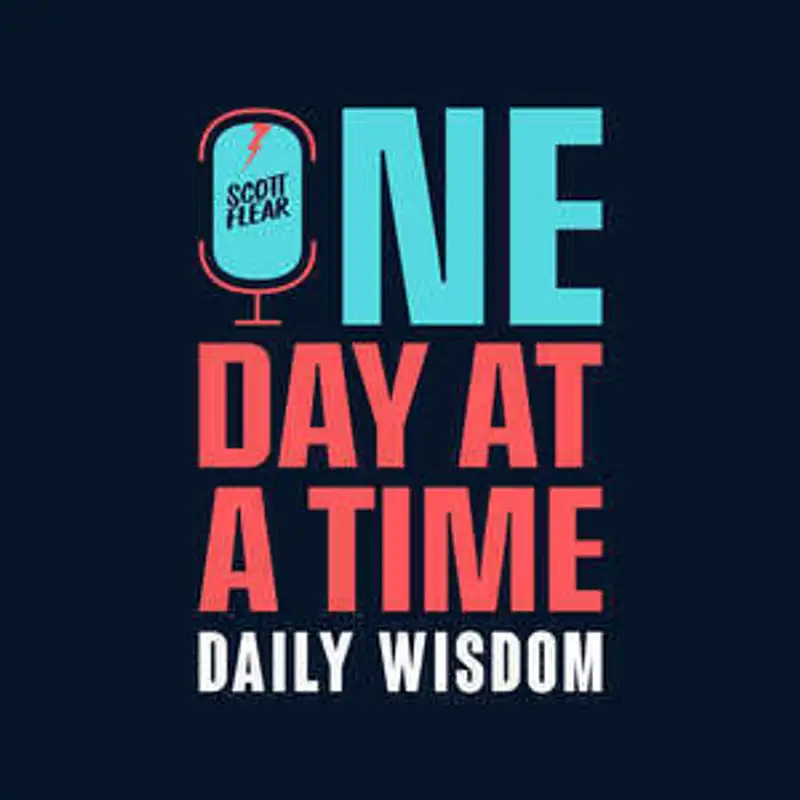Mindfulness exercise by a CBT specialist
Hello turtles and anyone else who is listening to today's podcast. Welcome to one day at a time. My name is Allie Homer and I am a turtle currently living in Kent in The UK. My main job is as a cognitive behavioural therapist and I work in an NHS clinic in West London. I've noticed that one of the most common problems that I tend to see in my patients is that of anxiety.
Speaker 1:I think anxiety is something that probably we all struggle with or have struggled with at some point in the past. Often anxiety does come hand in hand with stress as well. Today I really wanted to share with you one of the mindfulness exercises that we do to help to combat stress and anxiety. Although it's not a standalone CBT treatment, it can be something that is really, really effective for anybody regardless of whether or not they're in therapy. Also, it's just a really, really nice exercise for anyone to do, regardless of whether or not they feel that they have a diagnosis of anxiety or not.
Speaker 1:So this is called a progressive muscle relaxation. So you might have heard of this or experienced this before, but I thought it would be really nice for me to just record one of these for you to listen to whenever you feel that you perhaps need a bit of relaxation or or even just, just something to take your mind off of the worries and the concerns that you have day to day. So just a caveat before we begin. This exercise can have the effect of being very relaxing and even making some people feel a bit sleepy. So it's probably best not to do this one when you're just about to go out to work or even if you are driving.
Speaker 1:So maybe make some time to listen back to this later on in your day when it's appropriate to do so, and I hope you really enjoy this. So progressive muscle relaxation is aiming at reducing stress and anxiety in your body by having you slowly tense and then relax different muscle groups. So this can provide that immediate feeling of relaxation that I spoke about, but it is best to practice this frequently. And with practice, you'll become more aware of when you are experiencing tension in the body. So the brain starts to recognize perhaps when it gets to the end of the day and you've got your shoulders up around your ears, or perhaps your jaw is aching from holding yourself tense all day.
Speaker 1:Then you will have the skills that you need to recognize that you are tense and then to immediately send that signal to your muscles to help them relax. So this isn't just a one off thing to practice. It's really good to try and do this frequently. So we recommend at least three to four times a week. During this exercise, you should tense each muscle group, but not to the point of strain.
Speaker 1:So if you have any injuries, then you can skip that affected area. Or if you experience any pain, then please stop tensing that particular area. And do pay special attention to the feeling of releasing the tension in each muscle group, and then the resulting feeling of relaxation, and just how different that is from the feeling of tension. So when you're ready, we'll begin. It's really good for you to sit back or or lie down in a really comfortable position before you start doing this exercise.
Speaker 1:And if you're comfortable doing so, just shut your eyes. Begin by taking a deep breath in and noticing the feeling of the air filling your lungs. Hold your breath for a few seconds, and then release the breath slowly, letting any tension just leave your body. Now take in another deep breath and hold it. Again, slowly release the air.
Speaker 1:Even slower now, take another breath, filling your lungs, holding the air. And slowly release the breath. Imagine the feeling of tension just leaving your body. Now just return your breathing to a normal, comfortable pattern. And next, move your attention to your feet.
Speaker 1:So just bring your feet to center stage in your awareness. And now begin to tense your feet by curling up your toes in the arch of your foot. So just sort of screwing up your feet within your shoes or socks. Hold on to that tension and just notice what it feels like. And now release the tension in your feet, and notice the new feeling of relaxation.
Speaker 1:Next, begin to focus on your lower legs. Tense the muscles in your calves. Hold them tightly and pay attention to that feeling of tension in your calves. And now release that tension from your calves. Again, noticing that feeling of relaxation in your lower legs.
Speaker 1:And as you do this, just remember to continue taking those calming deep breaths. Next, tense the muscles of your upper legs, and you can do this by just tightly squeezing your thighs together. So make sure you feel some tension without straining. And release, feeling the tension leaving your muscles. And next, begin to tense your stomach.
Speaker 1:And you can do this by just sucking your stomach muscles in as though you were trying to get your stomach to touch the back of your spine. Squeeze harder and hold the tension. And now release that tension and just allow your body to go limp. Allow yourself to notice that feeling of relaxation through that area of your body. And don't forget to continue breathing.
Speaker 1:Breathing in, noticing the air filling your lungs, and then releasing the air slowly and just noticing it leave your lungs. Next, tense the muscles in your back, and you can do this by bringing your shoulder blades together behind you as though you were trying to get them to touch. Hold them tightly, tensing as hard as you can without straining. Keep holding. And now release the tension from your back.
Speaker 1:Feel the tension slowly leaving your body and the new feeling of relaxation take over. Just notice how different your body feels when you allow it to relax. Next, tense your arms all the way from your hands to your shoulders. So make a fist with your hands and squeeze all the way up your forearms, up the upper arms. You might even want to just bring your shoulders up around your ears.
Speaker 1:Hold it. And now release that tension from your arms and shoulders. Just notice the feeling of relaxation in your fingers, your hands, your arms, and your shoulders. Notice how your entire arm feels limp and at ease. And next, move up to your neck and your head.
Speaker 1:Tense your face and your neck by just screwing up the muscles around your eyes and mouth as though you'd eaten something really bitter. And now release the tension. Again, noticing that new feeling of relaxation. And now finally, tense your entire body. Tense your feet, your legs, your stomach, your arms, head, and neck, and face.
Speaker 1:Tense harder without straining. Hold that tension, and now release, allowing your whole body to go limp. And pay attention to that feeling of relaxation and just how different it is from the feeling of tension. And just sit for a moment with your breathing. Just taking a breath in, holding, and then just letting that breath release.
Speaker 1:Just continue those breaths for a few moments. And then begin to wake your body up by slowly moving your muscles, perhaps just wriggling the fingers and toes. Maybe making some adjustments to the position of your arms and legs. And maybe having a really good stretch right up over your head from your from your fingers right down to your toes. And when you're ready, just open your eyes.
Speaker 1:Reorientate to the room that you're in and feel ready to either begin or end your day. And I hope that you found this helpful. Again, doing this on a regular basis can really help your your mind to notice those physical physical sensations of our body that usually come along with anxiety or stress and just help to release that tension as soon as you notice it, helping you to combat those really unpleasant physical symptoms of anxiety that we can all experience from time to time that result in muscle tension and aches and pains. So I really hope that you enjoyed this, this mindfulness exercise and got something out of it. And I hope you will have a really amazing rest of your day, whatever it is that you're doing.

